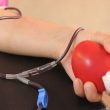The presence of coronary artery disease (CAD) in patients with aortic stenosis is high, reaching 50% to70% of cases. This poses a great challenge as to what strategy to use and the things we can do. Even though it has been shown complete revascularization is beneficial, it is often difficult to achieve. Instead, reasonable incomplete...
Peri-Procedural Infarction: More Frequent than and Not as Innocent as We Thought
Almost 30% of all patients experience some degree of myocardial injury after elective angioplasty, a statistic associated to an increase in cardiovascular events at 30 days and 1 year, according to this study recently published in Eur Heart J. The study only included consecutive patients who underwent elective angioplasty with a negative troponin level at admission. The...
Peri-Procedural Infarction: More Frequent than and Not as Innocent as We Thought
Almost 30% of all patients experience some degree of myocardial injury after elective angioplasty, a statistic associated to an increase in cardiovascular events at 30 days and 1 year, according to this study recently published in Eur Heart J. The study only included consecutive patients who underwent elective angioplasty with a negative troponin level at admission. The...
ACC 2018 | Risk of MI in Non-Cardiac Surgeries
One in five patients presenting perioperative MI during non-cardiac surgery should be readmitted within 30 days after surgery, and one in seven dies within the same period, according to the new study presented at ACC 2018 scientific sessions and simultaneously published in Circulation. These infarctions could be considered a iatrogenic complication, given the obvious lack of proper...
ACC 2018 | SMART-DATE: 6 Month DAPT Results Suboptimal in ACS
This study compared 6 vs 12 or more months of dual antiplatelet therapy (DAPT) in patients undergoing acute coronary syndrome (ACS) receiving contemporary DES, and it did not find differences in combined endpoint. However, looking at primary endpoint components separately, there were more infarctions in patients with a short DAPT scheme that we cannot ignore. Prolonging antiaggregation...
ACC 2018 | TREAT: Ticagrelor + Fibrinolytics’ Effect on Bleeding
Ticagrelor seems as safe as clopidogrel in patients undergoing ST elevation MI treated with fibrinolytics, at least in terms of TIMI major bleeding at 30 days. Longer follow up will help determine whether there are differences in efficacy or safety issues, as stated by the presenter Otavio Berwanger. This study was presented at ACC 2018 scientific sessions...
Dual Antiplatelet Therapy: Less Is More for Elderly Patients
A recent meta-analysis that will be published soon in JACC Intv offers evidence of benefit derived from short-term dual antiplatelet therapy for elderly patients. This is a patient group that has always been excluded from the major trials, while remaining one of the most challenging subgroups in which to balance bleeding and ischemic risks. The...
Tips to Prevent Radial Occlusion after Catheterization
The transradial access is the preferred access site for patients undergoing acute coronary syndrome. Compared to the transfemoral access site, it reduces the risk of all cause death, vascular complications and major bleeding. Radial artery occlusion is the most frequent vascular complication associated to this approach, though it rarely results in clinical consequences such as ischemia, given the...
Routine FFR/iFR Reclassifies Treatment Strategies in Half of Cases
Routine invasive physiology assessment at time of angiography reclassifies treatment strategies in a big number of patients with lesions in 2 or 3 vessels, according to the multicenter prospective study DEFINE REAL, recently published in JACC Cardiovascular Interventions. The information obtained by measuring fractional flow reserve (FFR) or instantaneous wave free ratio (iFR) made interventionists modify their original plans in...
The CULPRIT-SHOCK Study Is Finally Published in NEJM and It Is Bound to Change Guidelines
During SOLACI’s coverage of the TCT 2017 Congress in Denver, Colorado, we already mentioned some of the outcomes of this study that has arrived to revolutionize clinical practice, given the differences between its results and those of the classic SHOCK trial, which has marked for almost 20 years the treatment strategy for patients with infarction complicated...








